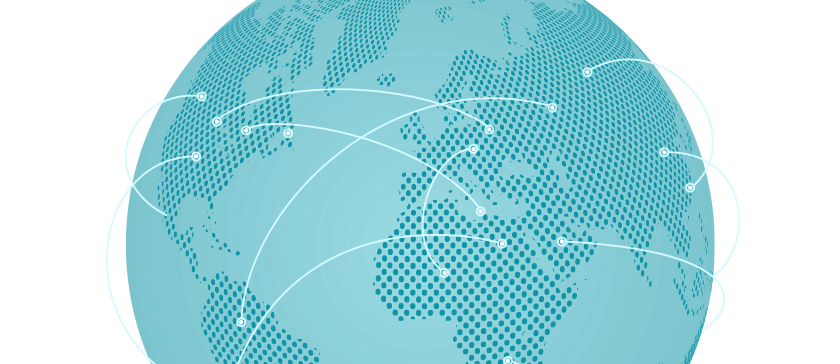
Introduction
The Apple Company was established on April 1, 1976, by its founders Ronald Gerald Wayne, Steven Paul Jobs, and Steve Wozniak. It was incorporated on January 3, 1977. Initially, Apple Company was known as Apple Computers Inc. and dealt with manufacturing computers for personal use. Currently, the company is involved in designing, manufacturing, and marketing media devices, mobile communication devices, digital players (both digital and portable), and personal computers. The current products and services of Apple Company include Mac, Apple TV, iPhone, iPod, software applications for consumers and professionals, iCloud, operating systems such as OS X and iOS, accessories, and support services. Additionally, the company sells and delivers applications and digital content via the Mac App Store, iTunes Store, iBooks, and App Store. It makes global sales via online stores, retail stores, direct sales, third-party cellular carriers, retailers, wholesalers and value-added resellers. Compatible products for iPod, iPad, and iPhone are sold by the company through retail and online stores. Apple Company has its headquarters in Cupertino, CA (CNN Money1).
Analysis of Apple Company
Strengths of the company are several. The company leads in innovation in the mobile devices industry. The company is a reputable brand with many retail stores and a growing ecosystem. Apple has an exemplary financial performance. It reported cash of $10 billion, no debts, and a gross profit of 43.9% (Jurevicius 1). The company also has exemplary teams that advertise and market its products.
The company has its weaknesses as well. To start with, the products are highly priced, with some of the new products being defective. Secondly, some Apple products are not compatible with certain operating systems. The company has been struggling with a reduction in its market share and declination of the gross margin. There is also the issue of patency infringements (Jurevicius 1).
The opportunities for Apple Company include the recently launched iTV with increased demand for iPhone 5 and iPhone mini. Secondly, it is the rapidly growing market for mobile advertising and rising demand for smartphones, tablets and services based on cloud. Thirdly, it is the debut of new application processes. Finally, the acquisition model of getting patents is also an opportunity for the company’s further growth and development (Jurevicius1).
The threats of the company comprise the fast rate at which technology is changing, migration of competitors into the online marketing of music, growing popularity of the Android operating system, pricing pressure from Samsung, the rights of IP that have been breached, and, finally, the increasing levels of pay for workers of Foxconn (Jurevicius1).
Calculate the price
Porter’s 5 Forces Model of Apple Inc.
Competitive rivalry arises when the competition to attract and retain similar customers intensifies due to the rising number of related firms in the market. Companies may then try to stand out in the market by capitalising on their pricing strategy. Apple Company has a medium level of competitive rivalry. It avoids competition based on price by venturing in high-end markets because in low-end markets, the main tool that differentiates firms is the price. Apple’s products have never been on sale. The company competes with its rivals on the basis of a unique ecosystem, service and quality. Such a strong competitive edge has been made possible through its products that are superior to rival eReaders, Android phones and tablets (Sophlee 4).
The supplier’s power to bargain is affected by how unique the products supplied are. Apple Company produces chips hence it has lowered the bargaining power of firms that produce chips. The power of manufacturers such as Foxconn is curtailed by Apple when the purchased equipment from Foxconn Company makes products for Apple only. The Apple Store is overtaking product services and retail distribution, thereby reducing the distributor’s power. Therefore, Apple has low supplier power (Sophlee5).
Buyer power of Apple is low. Buyer power means that if a company has many customers, the bargaining power of individual customers is reduced. When the costs of switching are high, the power to buy declines remarkably. Apple Company continuously maintains the costs of switching high through maintaining the features of its products the same. Transferring features of Apple products like Contacts, Pages, Calendar, iPhoto, iCloud, Numbers and iMovie is easy. To maintain customer loyalty, Apple always broadens the flow of products that are innovative (Sophlee 6).
The threat from new entrants to Apple Company is low. New entrants must look for ways of bringing exemplary and affordable products into the market to outshine Apple. The customer service, brand image, and innovations of Apple are very strong, giving new entrants a challenge. It may be hard for new entrants to beat, leave alone matching the cost structure of Tim Cook’s chain of supply (Sophlee7).
Apple has a medium threat of substitutes. The threat of substitutes emanates both from similar products from other companies as well as different products that meet the same consumer needs. Apple Company eliminates this phenomenon through selective product design that may, in the future, substitute the iPhones and MacBook (Sophlee 8).
Problem Analysis
The success of products made by Apple Inc., such as the iPad and iPhone, has made the company depend on manufacturers based in Asia to produce these products on its behalf, albeit at a cheaper cost. These Asia-based manufacturers have not been too keen to scrutinize the regions from where the minerals they use come from. This has brought about several accusations from the human right activists against Apple Company for utilising conflict minerals in its production. Conflict minerals are natural resources mined in regions that have conflicts and sold to get financial resources used in funding armed militia groups. These conflict minerals include gold, tin, tungsten, and tantalum. The conflict minerals are used to make cell phones, laptops, tablets, medical equipment, and aircraft. These minerals have caused human right abuse in war-torn world regions. The process of extracting and selling conflict minerals such as tantalum, tin, and tungsten mined from the illegal mines found in the Democratic Republic of Congo and neighboring nations has been funding armed militia fighting the government and abusing human rights of locals in these areas. Thus, the main issue for the company touches upon the dilemma of depending on these minerals; ethical supply chain of minerals; consideration of human rights in management and sustainability.
However, to tackle the problem and curb the allegations, the Apple Company has been dedicated to ensuring ethical sourcing and using of conflict-free minerals to make its products. The company has been expanding the number of refiners and smelters that are verified to be dealing with conflict-free minerals, which is opposed to funneling the company’s demand via the limited base of refiners and smelters or total avoidance of sources from Central Africa. Thus, the strategy of the company of continuous accountability and engagement has brought about real change. The number of conflict-free refiners and smelters with verification of being free of conflict minerals has been doubling in recent years. Most of the smelters and refiners were verified to be conflict-free on December 31, 2014. More than 88% of all the refiners and smelters identified have successfully completed the conflict-free audit or begun the process of auditing. The company is working together with its suppliers in verifying the remaining smelters and suppliers or dropping them from the supply chain of the company (EDGAR Online3).
Beginning the year 2011, Apple Company has encouraged refiners and smelters to comply with independent audit programmes on conflict-free minerals. Apple made the announcement in February 2014. It stated that every tantalum smelter in its supply chain had received approval for being conflict-free, which remained unchanged during the year. The accountability of Apple Company has been raised even higher because it made a publication of the names of its refiners and smelters, their countries, and their status on CFSP participation. This publication is updated publicly every quarter. The progress of the company is quite obvious. In the 2014 calendar year, Apple made the identification of 233 refiners and smelters as a possible origin of Subject Minerals, which were noted in its chain of supply in the course of the year. To report the absolute compliance status, the company finally reduced this list to 225 refiners and smelters. The following is the total number that the company is sure was operational and continues to be in its chain of supply as of December 31, 2014. Out of these 225 refiners and smelters, 135 have undergone verification of being conflict-free, with the remaining 64 having commenced the process of auditing (Edgar Online 4).
Apart from engaging the refiners and smelters in the audit in different parts of the world, Apple Company has been closely working with Conflict-Free Sourcing Initiative (CFSI) in providing in-kind and financial assistance and expertise. The company has served in CFSI leadership capacities such as steering committees and audit review committees. Apple assisted in improving the systems, audits and processes of CFSI. The company also used its experience in training other members of CFSI on effective ways of engaging with refiners, smelters and other key players to achieve a positive outcome (EDGAR Online 8).
The company has a commitment to forming opportunities for sourcing conflict-free minerals originating from the Democratic Republic of Congo and neighboring countries and steering economic development. The company is working together with agencies of the government, trade groups and non-governmental organizations (NGOs) in promoting change. Apple Company has given financial support for in-region initiatives such as KEMET’s Partnership for Social and Economic Sustainability, Conflict-Free Tin Initiative, ITRI Tin Supply Chain Initiative, Solutions for Hope, and Partnership Africa Canada. For instance, Apple Company worked together with Solutions for Hope in giving Diamond Development Initiative solar chargers and iPads to assist a system of registering artisanal miners found in regions of Democratic Republic of Congo hit by conflicts. Utilising an application of mobile survey and mapping built by Solutions for Hope, the registration process makes the artisanal miners enjoy improved formal protection together with improved economic opportunities. The company has provided funds to the Humanity United Foundation to promote the work of Partnership Africa Canada in tracking, certifying and exporting artisanal gold sourced from the Eastern Democratic Republic of Congo. Partnership Africa Canada provides economic incentives to the local traders and miners to enable them trade through legal channels (EDGAR Online 10).
Personal Suggestion to the Problem
The steps taken so far by the company to address the issue of conflict minerals are commendable. However, the use of conflict minerals in the company’s operation has adverse implications due to the potential actions of the US Securities and Exchange Commission (SEC), including fines on companies whose reports do not indicate complete compliance with laws governing conflict minerals. The sales of the company’s products are likely to be affected negatively because customers may find it uncomfortable to use products made from conflict minerals. Given the current high level of competition, the company cannot afford this weakness to be exploited by its competitors to outperform it in the market. The company should, therefore, continue with these efforts for they are the best to curb the conflict mineral issue.
In conclusion, the commitment that Apple Company has shown in its effort to ensure that the products it produces are free of conflict minerals is remarkable. It is a clear indication of the potential damage that these minerals can cause to the company’s image, and, therefore, the company is keen to address this issue. It is important that the company continues its various initiatives even if it faces obstacles such as the chain of supply for the conflict minerals that are not transparent, making it hard to distinguish the smelters and refiners that were financing violence in war-torn countries from those who were not.


